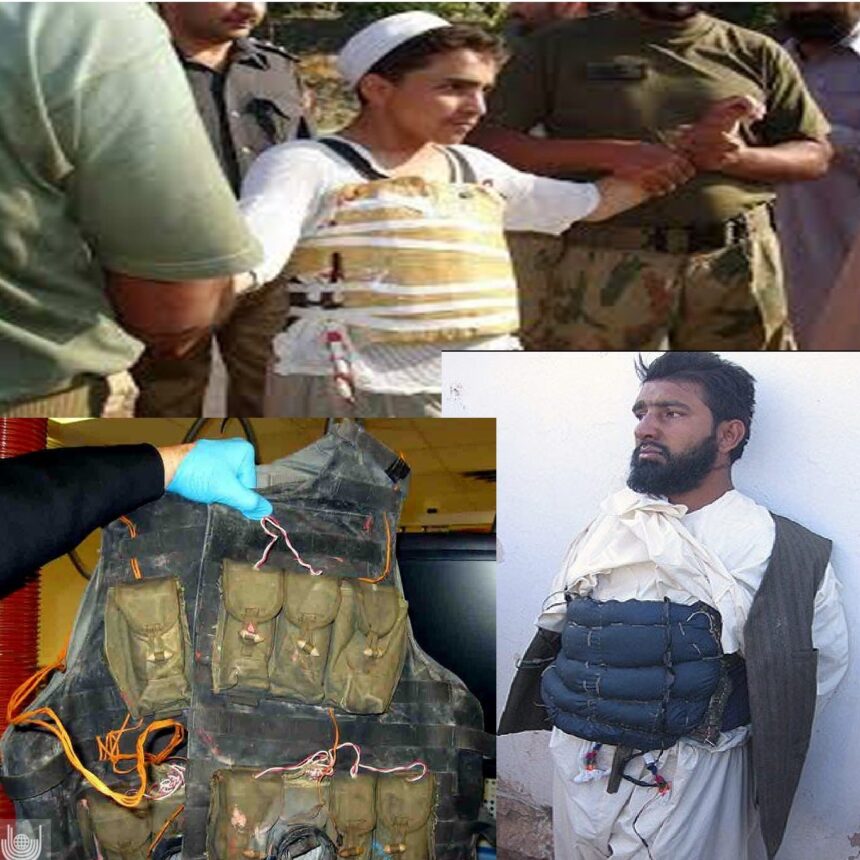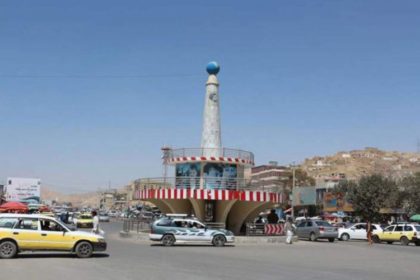RASC News Agency: In a chilling reminder of Afghanistan’s violent past, Hamdullah Fitrat, deputy spokesman of the Taliban, recently shared a video on X (formerly Twitter) featuring a group of Taliban fighters singing an anthem that glorifies suicide bombings and venerates the group’s architects of terror. The video framed as a patriotic chant is, in essence, a celebration of death, martyrdom, and ideological indoctrination.
The anthem’s lyrics boast of the fighters’ willingness to undertake suicide missions should any “error” be committed by those who oppose the Taliban’s rule. The verses even revere Jalaluddin Haqqani, the notorious founder of the Haqqani Network and one of the early strategists of suicide warfare in Afghanistan, affectionately calling him “Baba” or father of the movement.
In the footage, several Taliban militants are seen inside a moving vehicle, their faces glowing with pride as they harmonize on words that sanctify destruction. The message is unmistakable: the Taliban are not merely recalling their violent history they are reaffirming it as a point of identity, a creed to which they remain fiercely devoted.
This carefully choreographed video is far more than a nostalgic performance. It represents the Taliban’s systematic rebranding of suicide terror as cultural heritage, an attempt to desensitize a generation that has already suffered beyond measure. For millions of Afghanistani citizens, still haunted by two decades of explosions, assassinations, and grief, such propaganda is a cruel reopening of old wounds a reminder that the Taliban’s claim to “peace” is but a thin veil draped over an unchanged ideology of coercion and bloodshed.
The Taliban’s glorification of suicide attacks is not new, but its persistence exposes the group’s inability or unwillingness to evolve beyond its militant roots. Despite its assertions of moderation since seizing power in 2021, the group continues to romanticize violence as divine duty, portraying suicide bombers as martyrs and elevating them to mythical status within their propaganda ecosystem.
Contrary to Taliban claims that suicide operations were once confined to military targets, independent human rights records reveal a far grimmer reality. The overwhelming majority of victims were civilians men, women, and children caught in markets, schools, hospitals, and mosques. Entire families were wiped out in attacks that the Taliban justified as acts of “faith” and “resistance.”
For the survivors of these atrocities, the Taliban’s new anthem is not a song of devotion but an act of psychological warfare. “Every verse sounds like an explosion,” said one Kabul resident in a message to RASC. “It’s as if they are celebrating the deaths of our children again.”
Behind the Taliban’s glorified imagery lies a darker, more insidious machinery: the systematic recruitment and brainwashing of children. For years, the group relied on madrassas across the border in Pakistan to mold young boys into instruments of death. Indoctrinated with promises of paradise, these minors were trained, equipped with suicide vests, and sent to die and to kill in attacks that destroyed Afghanistani communities rather than defending them.
After reclaiming power, the Taliban went further institutionalizing martyrdom as state policy. Families of suicide bombers were rewarded with monthly stipends, land grants, and public honors. Such incentives ensured the perpetuation of a culture where human life holds no sanctity, and death in service of the “Emirate” is the highest aspiration.
This manipulation of faith, cloaked in religious symbolism, serves not God but power. The Taliban’s theology of violence remains its most effective weapon a tool to silence dissent, suppress civil society, and project fear both internally and beyond its borders.
The timing of the video’s release is unlikely to be coincidental. It comes amid heightened geopolitical tensions following remarks by former U.S. President Donald Trump, who declared that the United States should “take back Bagram Airbase” if the Taliban continue to defy international expectations. Trump’s warning of “severe consequences” reverberated across the region, reigniting debate over Afghanistan’s strategic importance.
In response, Taliban spokesman Zabihullah Mujahid asserted that Bagram “is part of Afghanistani soil” and that no foreign nation, including the U.S. or China, can claim it. Mujahid urged Washington to manage relations “through diplomacy,” yet the release of a suicide anthem betrays the emptiness of such rhetoric.
By celebrating martyrdom while speaking of diplomacy, the Taliban seek to project a paradoxical image a regime that preaches stability but performs terror. This is not diplomacy; it is psychological theater, a reminder to both the Afghanistani public and the international community that the Taliban’s true currency is still fear.
Nearly four years after retaking Kabul, the Taliban remain ideologically trapped in the same violent mythology that defined their insurgency. Their language has changed, but their methods have not. Beneath the surface of official statements about governance and reform, the group continues to cultivate an economy of extremism, trading in death as a means of legitimacy.
Such propaganda reveals a fundamental truth: the Taliban’s war was never about liberation or religion it was about control. Every chant, every anthem, every video celebrating “martyrdom” serves to remind the Afghanistani people that dissent will be met not with debate, but with detonation.
The Taliban’s return to the language of suicide and sacrifice exposes a movement still anchored in brutality, incapable of moral or political evolution. Their so-called “songs of faith” are nothing more than dirges of dominance, echoing through a land weary of war and betrayal.
For the people of Afghanistan, still grieving the cost of the Taliban’s past, such spectacles are not mere propaganda they are declarations of continuity. The Taliban may speak in the tone of authority, but they still sing in the rhythm of terror.






